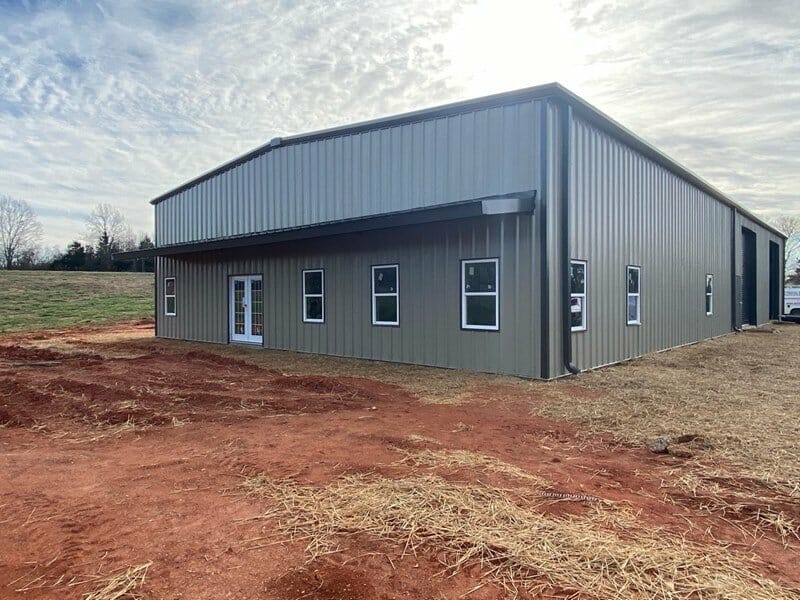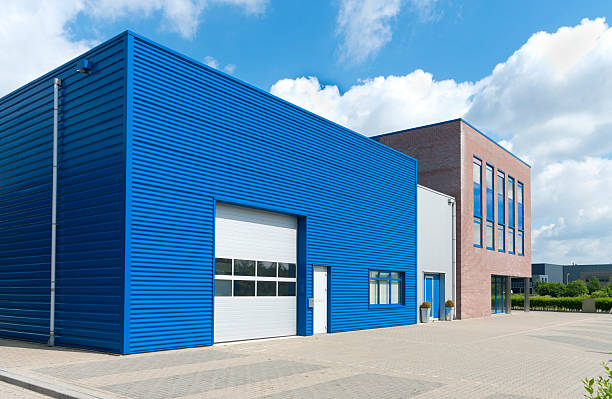Premium Steel Buildings: Robust and Reputable Choices for Industrial and Commercial Usage
Premium Steel Buildings: Robust and Reputable Choices for Industrial and Commercial Usage
Blog Article
The Competitive Advantage of Steel Buildings: Why Select This Superior Alternative
Steel structures have actually emerged as an engaging option in the realm of building for a wide range of reasons. The affordable side that steel buildings hold expands much beyond their first charm, making them a preferred alternative for those seeking longevity and adaptability in their building projects.
Durability and Long Life
In the realm of toughness, building and durability are essential facets that underscore the value proposition of steel structures. Steel is renowned for its robustness and ability to hold up against different ecological conditions, making it an excellent choice for resilient frameworks. Unlike traditional materials like timber or concrete, steel does not warp, fracture, or rot with time, making certain that a steel building stays structurally sound for years.
One essential variable contributing to the longevity of steel structures is their resistance to pests such as termites, which can cause considerable damage to wooden frameworks. Steel is likewise non-combustible, reducing the risk of fire damage and enhancing the security of occupants. Additionally, steel structures call for marginal upkeep contrasted to various other building and construction products, saving both money and time over time.
Additionally, improvements in steel production innovation have actually additionally improved the durability of steel buildings by improving corrosion resistance and architectural honesty. With correct treatment and maintenance, a well-constructed steel building can last more than half a century, supplying a trustworthy and long lasting service for numerous building and construction needs.
Cost-Effectiveness
With its numerous financial benefits, steel as a structure product uses a compelling cost-effective remedy for numerous building and construction jobs. The cost-effectiveness of steel buildings comes from several vital elements. Firstly, the first expense of steel might be greater than some traditional products, but the long-term cost savings are significant. Steel frameworks require very little upkeep, lowering repair work and substitute costs with time. Additionally, steel is very long lasting, which translates to decrease insurance policy premiums as a result of reduced threat of damages from aspects such as fire, pests, and all-natural disasters.
In addition, the construction process with steel is much faster and a lot more efficient contrasted to various other materials, causing minimized labor prices and earlier project conclusion. Steel structures are likewise energy-efficient, permitting for cost savings on heating & cooling costs. The versatility of steel permits easy development or modification, minimizing future building and construction expenses by eliminating the demand for extensive remodellings. Generally, the cost-effectiveness of steel structures makes them a clever financial investment for numerous building needs.
Versatility in Layout
The flexibility of steel as a structure material permits a variety of innovative layout opportunities in building projects. Steel structures offer unequaled adaptability in style, making them a preferred selection for contractors and architects. Among the crucial advantages of steel is its strength-to-weight proportion, which allows the construction of large, open rooms without the requirement for excessive assistance columns. This architectural efficiency enables innovative and contemporary styles that might not be feasible with other structure materials.
Steel's adaptability also permits personalization to fulfill particular style needs. Whether it's curved roofing systems, intricate facades, or one-of-a-kind geometric shapes, steel can be formed to bring basically any layout concept to life. In addition, steel structures read more can be easily broadened or customized, supplying future flexibility for adjusting to transforming demands.
Additionally, using steel in building and construction allows for sustainable design methods. Steel is very recyclable, reducing environmental impact and promoting eco-friendly construction. Its longevity and resistance to rust make sure that steel structures keep their visual allure and structural stability for many years to find. Eventually, the versatility of steel in style not only improves the visual appeal of buildings but likewise adds to their durability and functionality.

Sustainable Building Practices
Building upon the foundation of adaptability in style, sustainable building techniques in steel structures play an essential function in mitigating environmental influence and advertising long-term environmentally friendly options. When steel structures reach the end of their lifecycle, the steel elements can be recycled and utilized in brand-new building jobs, minimizing the need for raw products and lessening waste. Furthermore, the power performance of steel structures contributes to sustainability efforts.

Fast Building And Construction Timeline

In addition, the structured procedure of putting up steel frameworks decreases construction time considerably. The simpleness of steel building layout and the simplicity of setting up add to faster job completion, making it an optimal option for clients with time-sensitive requirements (steel buildings). Furthermore, the ability to deal with different parts all at once, such as website preparation and structure building alongside steel manufacture, additional accelerates the total building timeline
Conclusion
To conclude, steel buildings offer a competitive advantage because of their toughness, cost-effectiveness, flexibility in layout, sustainable building and construction methods, and quick building timeline. These aspects make steel buildings a premium choice for various building and construction projects, giving long-term benefits and worth. Picking steel structures can lead to enhanced performance, performance, and sustainability in the building and construction sector.
Unlike conventional products like wood or concrete, steel does not warp, fracture, or rot over time, making certain that a steel building stays structurally audio for decades.
The flexibility of steel as a building material allows for a wide variety of cutting-edge style opportunities in construction this jobs.Structure upon the structure of flexibility in style, lasting building and construction methods in steel structures play a vital duty in mitigating environmental effect and advertising lasting environmentally friendly options. When steel buildings reach the end of their lifecycle, the steel parts can be reused and made use of in new building jobs, lowering the demand for raw materials and minimizing waste.In conclusion, steel buildings supply a competitive advantage due to their longevity, cost-effectiveness, versatility in style, lasting construction methods, and quick building and construction timeline.
Report this page